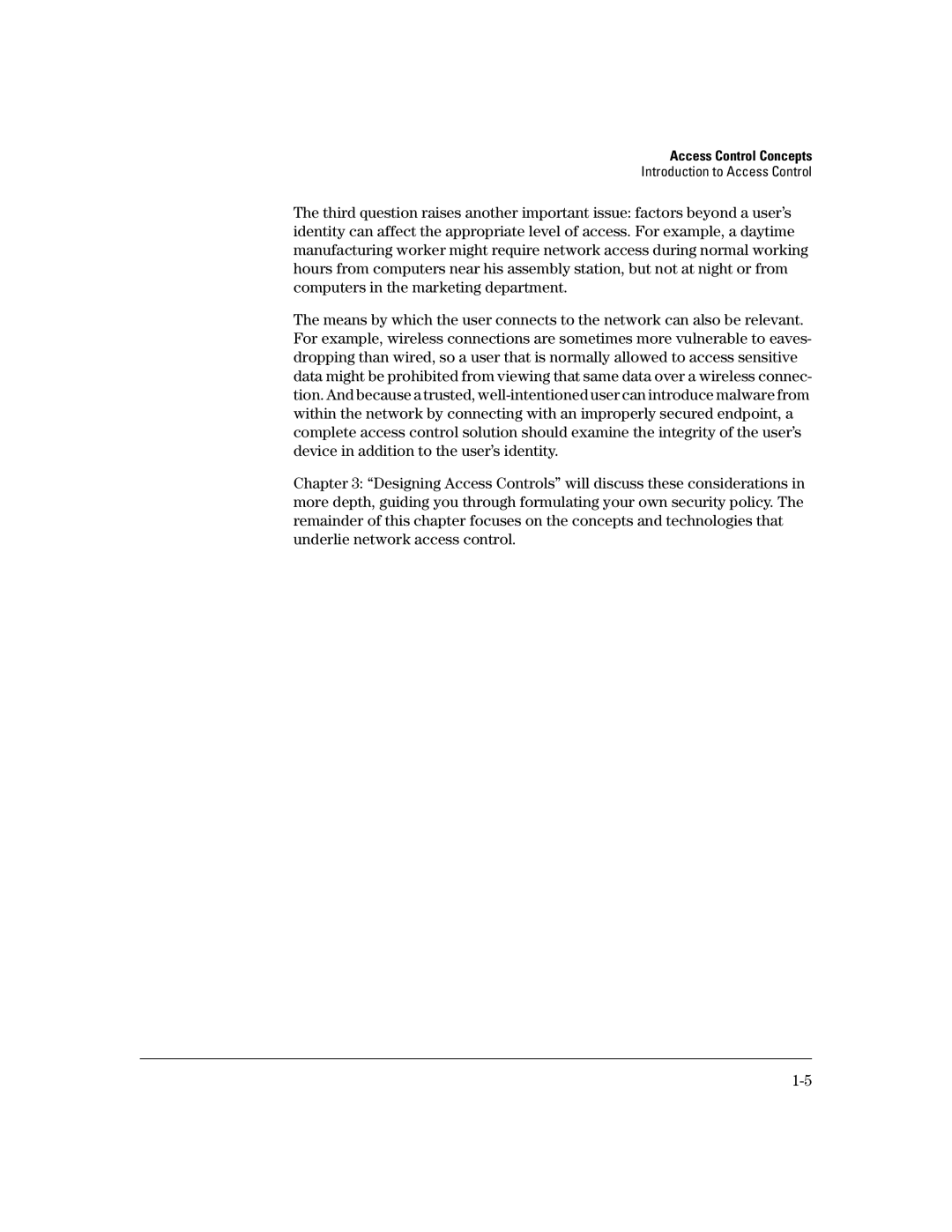Access Control Concepts
Introduction to Access Control
The third question raises another important issue: factors beyond a user’s identity can affect the appropriate level of access. For example, a daytime manufacturing worker might require network access during normal working hours from computers near his assembly station, but not at night or from computers in the marketing department.
The means by which the user connects to the network can also be relevant. For example, wireless connections are sometimes more vulnerable to eaves- dropping than wired, so a user that is normally allowed to access sensitive data might be prohibited from viewing that same data over a wireless connec- tion. And because a trusted,
Chapter 3: “Designing Access Controls” will discuss these considerations in more depth, guiding you through formulating your own security policy. The remainder of this chapter focuses on the concepts and technologies that underlie network access control.
